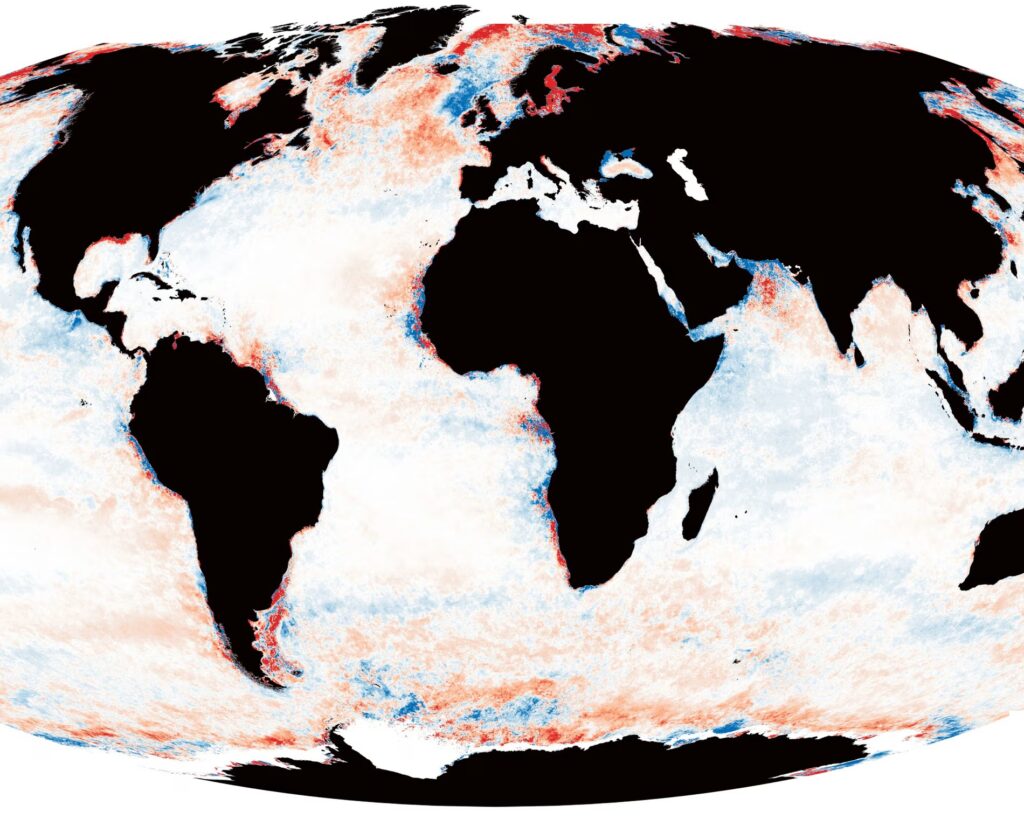Story
New study reveals global ‘Ocean Darkening’ threatens marine life
29 May 2025
A new study co-led by PML’s Professor Tim Smyth has revealed a 21% reduction in sunlight zones vital for life in the sea.

Over one-fifth of the Global Ocean – an area larger than 75 million square kilometres – has grown darker in the past two decades, according to a new study titled ‘Darkening of the Global Ocean’.
The research was co-led by PML’s Professor Tim Smyth alongside Dr Thomas Davies from the University of Plymouth.
It is the first global-scale assessment of long-term changes in the ocean’s photic zone; the sunlit upper layer of the Ocean that supports over 90% of marine life and underpins key planetary processes such as oxygen production and carbon cycling.
“The Ocean is far more dynamic than it is often given credit for. For example, we know the light levels within the water column vary massively over any 24-hour period – with the change between night and day – and animals whose behaviour is directly influenced by light are far more sensitive to its processes and change,” said Professor Tim Smyth.
“If the photic zone is reducing by around 50m in large swathes of the ocean, animals that need light will be forced closer to the surface where they will have to compete for food and the other resources they need. That could bring about fundamental changes in the entire marine ecosystem.”
Using two decades of satellite data from NASA’s Ocean Colour Web, the researchers tracked light penetration across the world’s oceans and applied innovative algorithms to calculate changes in photic zone depth.
Their findings reveal that between 2003 and 2022:
- 21% of the global ocean experienced darkening,
- 9% saw a reduction in photic zone depth greater than 50 metres (comparable in area to the continent of Africa),
- and 2.6% saw declines of more than 100 metres.
Image caption: Changes in global photic zones between 2003 and 2022 are shown with red areas to indicate ocean darkening and blue lightening. Illustration: Thomas Davies/University of Plymouth
The causes of ocean darkening vary by region. In coastal waters, increased rainfall, agricultural runoff, and sediment loading are likely causes, while in the open ocean, changes in algal bloom dynamics and rising sea surface temperatures are reducing light penetration.
Lead author Dr Thomas Davies, Associate Professor of Marine Conservation at the University of Plymouth, added: “There has been research showing how the surface of the ocean has changed colour over the last 20 years, potentially as a result of changes in plankton communities. But our results provide evidence that such changes cause widespread darkening that reduces the amount of ocean available for animals that rely on the sun and the moon for their survival and reproduction. We also rely on the ocean and its photic zones for the air we breathe, the fish we eat, our ability to fight climate change, and for the general health and wellbeing of the planet. Taking all of that into account, our findings represent genuine cause for concern.”
This work builds on over a decade of collaboration between PML and the University of Plymouth, including extensive research into the effects of artificial light at night (ALAN) on marine ecosystems. While ALAN was not a direct focus of this study, it forms part of a broader effort to understand the interplay between light and marine life.
The most pronounced photic zone declines were observed in the Gulf Stream, the polar regions, and enclosed coastal seas like the Baltic – regions already undergoing rapid change due to climate disruption.
Closer to home, darkening was recorded across parts of the North Sea, Celtic Sea, and eastern British coastlines, while areas like the English Channel and around the Orkney and Shetland Islands have brightened.
The full study ‘Darkening of the Global Ocean’ is available in Global Change Biology >>

